Hauling out old, leaking and dirty tank water heaters can be a messy job. I’ve covered walkways with drop cloths, tarps or plastic in attempt to contain the dripping water, soot or rust and still have had carpets get soiled; not since we started using the “body bag” heater hauler. It’s a giant duffel with Read more
Tool Review
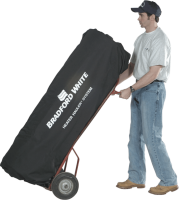
Hauling out old, leaking and dirty tank water heaters can be a messy job. I’ve covered walkways with drop cloths, tarps or plastic in attempt to contain the dripping water, soot or rust and still have had carpets get soiled; not since we started using the “body bag” heater hauler. It’s a giant duffel with a water resistant lining inside that contains the mess. It’s always on my truck and I haven’t had to hire a carpet cleaner for years now.
Check out my first review from 2015 on The Hub
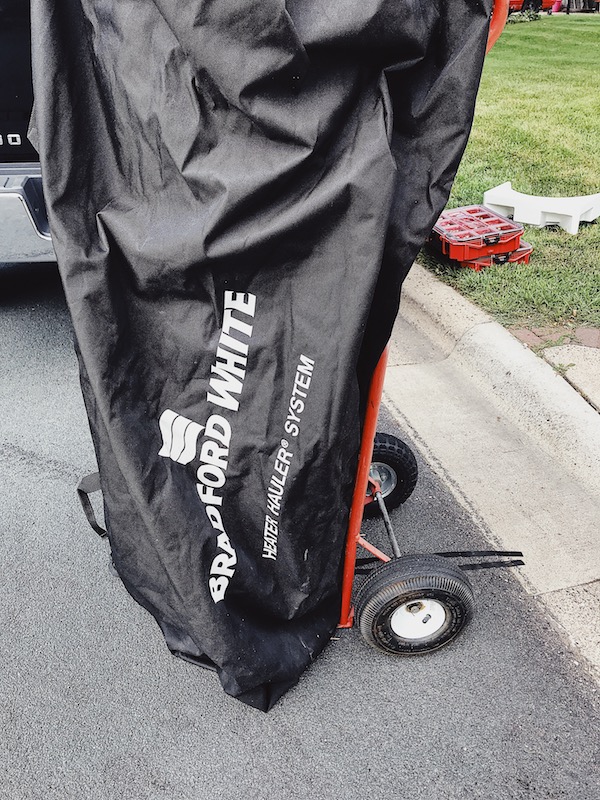
Bradford White Heater Hauler
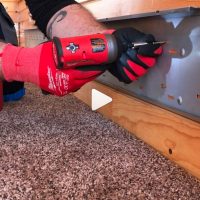
There are three things I want to highlight in this video, not all are totally flattering so please take a look: 1. The 2nd generation M12 Fuel Impact is even better than the first and that’s actually incredible because anyone who’s owned the 1st gen knows it’s a very nice tool. 2. The Smith HE2 Read more
There are three things I want to highlight in this video, not all are totally flattering so please take a look:
1. The 2nd generation M12 Fuel Impact is even better than the first and that’s actually incredible because anyone who’s owned the 1st gen knows it’s a very nice tool.
2. The Smith HE2 copper fintube baseboard is fabulous. The performance is crazy awesome and makes it the best bb on the market for mod/con & electric boilers, without a doubt. Don’t argue with me on this, I’ve tried them all and I’ve installed miles of bb. This is a fact, it’s science.
3. The Milwaukee Tool dipped gloves (I’m wearing the cut level 1 pair here) are nice but too stiff in the cold for my liking. Also, they’re supposed to have “SMARTSWIPE” index fingers but I can tell you first hand they don’t work on my iPhone 7+ at all. I’m told that this may be due to my screen protector or the angle of my finger. They did however protect my hands against the 750 million cuts I would’ve received from the razor sharp aluminum fins on the bb. They’re priced right in my opinion and I’d have no problem buying more pairs because they fit well and offer the protection I am looking for.
Hope this helps,
Eric Aune
Aune Plumbing, LLC
Mechanical Hub ProStaff

https://www.youtube.com/watch?v=_b-m69_obcM I have to be honest. I don’t normally stand around in 4”-5” of water on the job. I do however walk through unplowed driveways, parking lots and through the rain while moving tools and equipment in and out of the truck so having dry feet is paramount to capping off a good day at Read more
https://www.youtube.com/watch?v=_b-m69_obcM
I have to be honest. I don’t normally stand around in 4”-5” of water on the job. I do however walk through unplowed driveways, parking lots and through the rain while moving tools and equipment in and out of the truck so having dry feet is paramount to capping off a good day at work.
I’ve been wearing the KEEN Utility Pittsburgh boots for work [and play] for a couple months now and I’m impressed not only with the KEEN.DRY system but the comfort and support has surpassed my expectations. For those not familiar, the KEEN.DRY system is a proprietary waterproof membrane that lets vapor out without letting water in. I’d put it up against the major brand of waterproofing we’re all familiar with.
 The support and protection built-in include full-length TPU stability plate providing forefoot flexibility and underfoot stability; when mated with the metatomical footbed design where an engineered arch support cradles your foot for all day comfort.
The support and protection built-in include full-length TPU stability plate providing forefoot flexibility and underfoot stability; when mated with the metatomical footbed design where an engineered arch support cradles your foot for all day comfort.
I’ve been a longtime wearer of natural leather upper boots so moving into a composite build boot of natural leather and cloth took a little getting used to. Boots like the Pittsburgh are slightly bulkier than the typical all-leather boot but that has more to do with the engineering in design for flexibility and durability. Rubber, cloth, nubuck leather all play a role in the upper build of the boot.
The soles are non-slip oil resistant rubber and provide aggressive traction on this model. I’m more accustomed to a less “off-road” tread but I haven’t found anything negative to say about the tread pattern; if I have any comments on the tread I’d say climbing my step ladder is where I most notice the aggressive pattern. Once in a while my foot will catch on the edge of a ladder rung where it may not have with a smoother, more typical work boot tread pattern.
 Overall I’m impressed with the KEEN Utility Pittsburgh boots. Material quality is very high, build quality as well. Comfort concerns went straight out the window after day one of wear and have not changed in the short time I’ve been putting them to work. I’ve got my eye on a few other models that may be a little closer to what I’m used to for style and features but, these being the most popular model in the US [in Canada they’re known as the Hamiltons] I’m not surprised based on the overall quality and design.
Overall I’m impressed with the KEEN Utility Pittsburgh boots. Material quality is very high, build quality as well. Comfort concerns went straight out the window after day one of wear and have not changed in the short time I’ve been putting them to work. I’ve got my eye on a few other models that may be a little closer to what I’m used to for style and features but, these being the most popular model in the US [in Canada they’re known as the Hamiltons] I’m not surprised based on the overall quality and design.
Click this link to visit KEEN’s site and see more about the Pittsburgh boots.
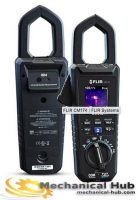
TOOL: FLIR CM174 Imaging 600A AC/DC Clamp Meter With IGM (Infrared Guided Measurement) Mechanical Hub asked me to test out the FLIR CM174 Clamp Meter with the integrated IR Camera. I was excited yet skeptical to try out a new meter. In my line of electrical work I have my ‘go to’ meters and current Read more
TOOL: FLIR CM174 Imaging 600A AC/DC Clamp Meter With IGM (Infrared Guided Measurement)
Mechanical Hub asked me to test out the FLIR CM174 Clamp Meter with the integrated IR Camera. I was excited yet skeptical to try out a new meter. In my line of electrical work I have my ‘go to’ meters and current clamps that I know every in and out of. These have shared the same long days, weekends, overnights, and holiday emergency calls, so why look at product other than what I’ve carried for years? Well after I familiarized myself with the FLIR CM174, I was impressed by the added functionality that this meter provided.
Let’s be honest, in the electrical world there is voltage and current and you don’t need much of a complex device to tell you what these readings are; however, I didn’t realize what all I was missing without FLIR’s IGM technology (Infrared Guided Measurement). The IR function of this compact meter gave me an advantage and more importantly a safety aspect to my job that was not their previously. Not only can I easily troubleshoot hot spots and imminent failures with this meter, but when going through my procedures to test for ‘zero’ voltage or absence of voltage, I am also able to take a look at the thermal properties of the equipment. The old mentality is that I need to get to work and get this job done as quick as possible, so I only care about voltage – am I going to get shocked or not. Getting hit by a stiff 480V in the morning is not how I like to start my day, but the reality is I’m stuck in a time crunch and the customer is standing behind me tapping his feet because his plant is shut down and costing him big dollars every second it is down. So I hurry up and grab my ‘new’ meter, and as expected, the voltage is zero, but what about the temperature? Do I really have time to check this, and why would I care to even look at this, I have never done this in the past. So I have the meter in my hand and it is only 1 quick click away from telling me the temperature. To my surprise there is a section of the equipment that was extremely hot due to a loose connection. My heart takes off and I get a little clammy thinking about how bad I could have been burnt when I would have grabbed onto the equipment to get this repair completed while trying to get the customer back online. 
The silent killer, known as electricity, is not the only silent danger that I should be worried about. I thank the FLIR CM174 for identifying other safety aspects of my job and preventing me from being injured. The safety aspect alone is worth having the meter, but the ability to troubleshoot using the IR functionality of this meter is a huge step above what the industry is used to. At the end of day, the customer has the lights back on and was thoroughly impressed by the equipment not only to solve their problems, but to identify and resolve other pending issues that were not identified before. This customer is now loyal to us and continues to use us for their service needs.
Click the ProStaff logo below to enter this month’s giveaway
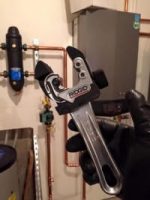
For decades now professional contractors have been using what I have always called “Imp” cutters to cut various types of tubing in hard to reach places. The RIDGID model 101 Close Quarters Tubing Cutter has long been the industry standard for plumbing and HVAC pro’s and is likely to remain atop the bunch because of Read more
For decades now professional contractors have been using what I have always called “Imp” cutters to cut various types of tubing in hard to reach places. The RIDGID model 101 Close Quarters Tubing Cutter has long been the industry standard for plumbing and HVAC pro’s and is likely to remain atop the bunch because of its robust build quality, simple design and function along with its capability to handle not only copper but aluminum, plastic and brass tubing. Its likely you own one or more of the model 101 cutter, I know I do so I was excited to get my hands on the new #118 Autofeed Cutter for review.
First off the model I have tested is RIDGID catalog number 32573, model 118. The #118 refers to the self-feeding cutter included in the 2-in-1 Close Quarters AUTOFEED® Cutter. The #118 is deigned to operate much like other brand “auto cutters” that have been around for a number of years but there’s a significant difference with RIDGID’s offering in that it can handle a range of tubing sizes like it’s predecessors; the range here is tubing sizes ¼” – 1-1/8”. The 2-in-1 includes a ratcheting handle along with the self-feeding cutter w/ a football-shaped knob for easier turning than the original round tension knob.
I’ve noticed these cutters at my local wholesale house, they’re available online and at Home Depot as well. To be honest I didn’t know RIDGID had a self-feeding cutter and I was excited to try it given my loyalty based on all of their tools I already own and use. You can see the tool in action and get some of my thoughts in the video below.
https://www.youtube.com/watch?v=JAE5LOORe0o
Overall I’d say the 2-in-1 did the job and would likely standup to the task for many years to come. As you could see in the video its not a one-handed operation like most of the other “auto-cutters” out there but it should be noted that it wasn’t RIDGID’s intention to be such a tool. The idea that you can replace at least three auto-cutters [1/2”, ¾” & 1”] with one tool is attractive but the added ratcheting handle hasn’t sold me yet. I can see where this may be a benefit but even after years of working in the trade I found it less cumbersome to use the cutter without the ratchet handle. I’ll continue to use the model #118 cutter without the handle for sure. Maybe in this case it’s a matter of trying to fix something that isn’t broken?
The ratchet handle and cutter fitment leaves a little to be desired. Take notice from the video, the ¾” tubing I was cutting was rigidly secure in the vertical position. When turning the handle there was a decent amount of play between the cutter and the ratchet head; I’m not sure this matters considering the tube was cut as planned but it just doesn’t feel right. Nonetheless, the cutter itself is built solidly, the handle feels great in your hand and is fairly easy to use.
Tool Features & Specs:





